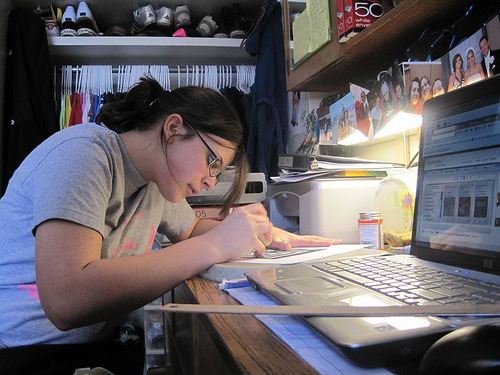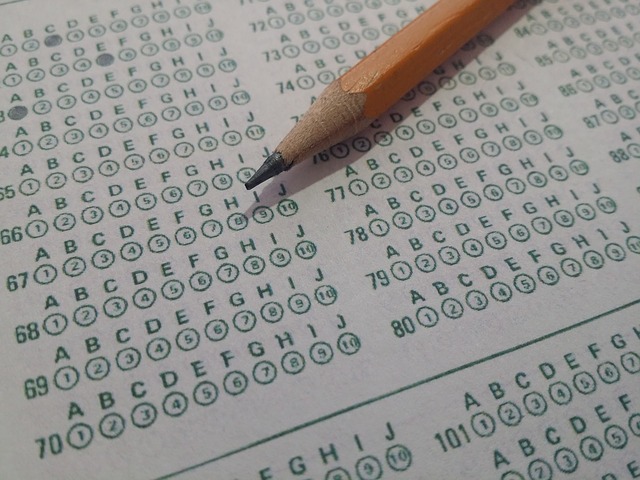Achieving Academic Goals Through Habit Change: Part II

In our previous piece, we discussed the importance of habit change in achieving academic goals. After publishing, we were fortunate to receive a comment from a student-athlete who had read the blog post. Her remarks concerned that fleeting entity busy students always seem to lack: time. How, she asked, would it be feasible to set aside additional study time when her schedule was already maxed out? She cited sleep loss as the likely result, and asked what might be done.
We never want students to sacrifice sleep for study (or anything else, for that matter). Studies conducted over the past several decades have made it abundantly clear that adolescent sleep loss is physically and mentally detrimental, full stop. While careful planning can certainly help students avoid losing sleep, plans can go only so far when students’ schedules are subject to the vicissitudes of life.
The student's point—that life just isn’t that simple, especially for student-athletes like her—got me to thinking. To change habits and achieve new goals within finite time, what is a busy student to do?
Luckily, it’s a question I’ve considered before, both with respect to myself and to the studying process. The goal isn’t necessarily to conjure more study time, but to maximize efficiency during the time you already spend studying. From my vantage point, there are two major categories that affect study efficiency: external distractions, and internal learning approach.
Conquering Distractions and Filling Gaps
External distractions are simultaneously the easiest and most challenging factors to address. Easy, because it doesn’t take too much consideration to identify the distractions: a television on in the next room; the frequent buzzing of notifications on our smart devices; the urgent alerts from our email programs. Challenging, because the draw of these interruptions is magnetic. In fact, the very design of our phones and the apps they contain is meant to addict us.
And yet, throwing our hands up in the air and surrendering to these various time sinks needn’t be inevitable. To address the distractions, we need to become aware of their significance. Any student looking to save time by eliminating distractions should do the following.
- Sit down to start an assignment, homework, or study session, and write down the time. Do this in your normal spot, accompanied by any devices that are usually around.
- As soon as you get distracted, look at the time and write down the nature of the distraction. Handle whatever the distraction is, and then note the time you return to your work.
- Repeat until an hour is up.
At the end of the hour, your sheet might look like this.
7:00 PM: Started studying.
7:07: Phone buzzed. Responded to texts from friends.
7:10: Resumed studying.
7:14: Checked my friends’ Instagram posts. Commented on posts.
7:18: Resumed studying.
7:28: Remembered that song I wanted to listen to. Played it on YouTube.
7:33: Resumed studying.
7:45: Phone rang. Mom asked me if I wanted ice cream. Decided to stand up and stretch.
7:48: Resumed studying.
7:55: Saw email from coach come in. Checked practice schedule.
7:57: Resumed studying.
8:00 PM: Stopped studying.
Each distraction took up a “small” amount of time: 2 minutes here, 4 minutes there—nothing in the grand scheme of things. But in total, these distractions took up 17 minutes—just over 25% of your hour of “study” time. When they’re all summed up, the distractions no longer seem insignificant, do they? A quarter of an hour is enough time to practice several math problems; to diagram the basic steps of photosynthesis; to review the factors that precipitated World War I. If it’s useful, restate the lost time in non-academic terms. For example, if you’re a student-athlete who runs track, how many miles could you run in 17 minutes?
Try this for yourself, and you may be surprised at just how easy it is to let one-quarter of your time slip away. Maybe even more of your time is lost to distractions. And if you’re losing 17 minutes per hour for three or four hours between the end of the school day and when you’d like to go to bed, that’s basically an hour you’ve tossed.
There's also the time you're losing passively—that is, time when you're doing nothing but waiting for something else to happen. School bus rides, the trip to and from practice, and the wait at the dentist before your teeth cleaning come to mind. If you're looking for extra stretches of time, even brief intervals can provide valuable opportunities to gain some back. When you know you're going to have one of these "gap" periods in your schedule, plan for it: bring along some study material to fill the time that you'd normally just let slip by.
Once you’re aware of how much time you’re losing to things that aren’t all that urgent (your friend’s video post of his slick skateboarding moves, or your choice between mint-chocolate-chip and rocky road), you can set yourself up for better success next time. Put your phone into airplane mode for the hour; turn off the TV; let mom know that you’ll worry about dessert after 8 PM. And remember to never miss an opportunity to take advantage of down time when you're waiting on someone or something else. Regaining the time lost to distractions is like discovering buried treasure, because you’ll be rewarded with extra time that you can use to do what needs to get done.
Evaluating Your Learning Approach
Internal learning approach is more difficult to calibrate, but will bear just as much fruit as eliminating distractions. The goal is to determine how you learn best, and that means optimizing comprehension and retention. If, for instance, you simply assume that creating and flipping through index cards is the best way to learn your Spanish verb conjugations, or to outline the motifs in Romeo and Juliet, you may actually be missing out on a more effective studying method. Instead of taking the rote memorization approach to Spanish, why not try writing sentences that incorporate your different verb forms? You might find that doing the latter allows your conjugations to sink in to 100% accuracy within 15 minutes, whereas having your little brother quiz you using your flashcards might take 25 minutes. Ten minutes saved are ten minutes earned.
It’s scary to question your usual study methods. If they ain’t broke, don’t fix ‘em—right? Not necessarily. In this case, just because “they ain’t broke” doesn’t mean they’re as good as they could be. In fact, they probably aren’t. We’re not perfect, and that’s the point: if you maintain a growth mindset with respect to your study habits, you may find that you’re a more efficient and capable learner than you ever knew.
Learning approach is also affected by setting. If you like to diagram chemical reactions or create a timeline of historical events, you may find it convenient to spread out across a larger space. This will allow for plenty of room for your textbook, notebook/binder, computer (where necessary), and extra paper. Feeling less confined can actually help you relax, allowing you to focus on learning instead of on your books precariously hanging halfway off the table.
Finally, you might mix approaches. For example, you could use a few sheets of paper to diagram a timeline surrounding a historical event, and then supplement it selectively with index cards highlighting major people and events at key points along the timeline. For an essay-based English test, you might jot down main points you could use to argue your thesis, but then speak aloud the ideas you’d use to support them. Get creative and dynamic, switching up the ways in which you foster your learning; it’ll be challenging, but then again, challenging your brain is one of the best ways to make it work better.
Summary
Finding more time isn’t always about finding new time, but restructuring your current time to better suit your needs. There will always be some elements of your time that are out of your control, but luckily, these are usually predictable: the school day lasts so long, as do practice/games, meals, and other responsibilities. Take the time you are already devoting to studying, and ask yourself: am I using this time in the best way I can? Address the distractions and question your learning strategies to improve how you study—you’ll find time you didn’t know you had.


